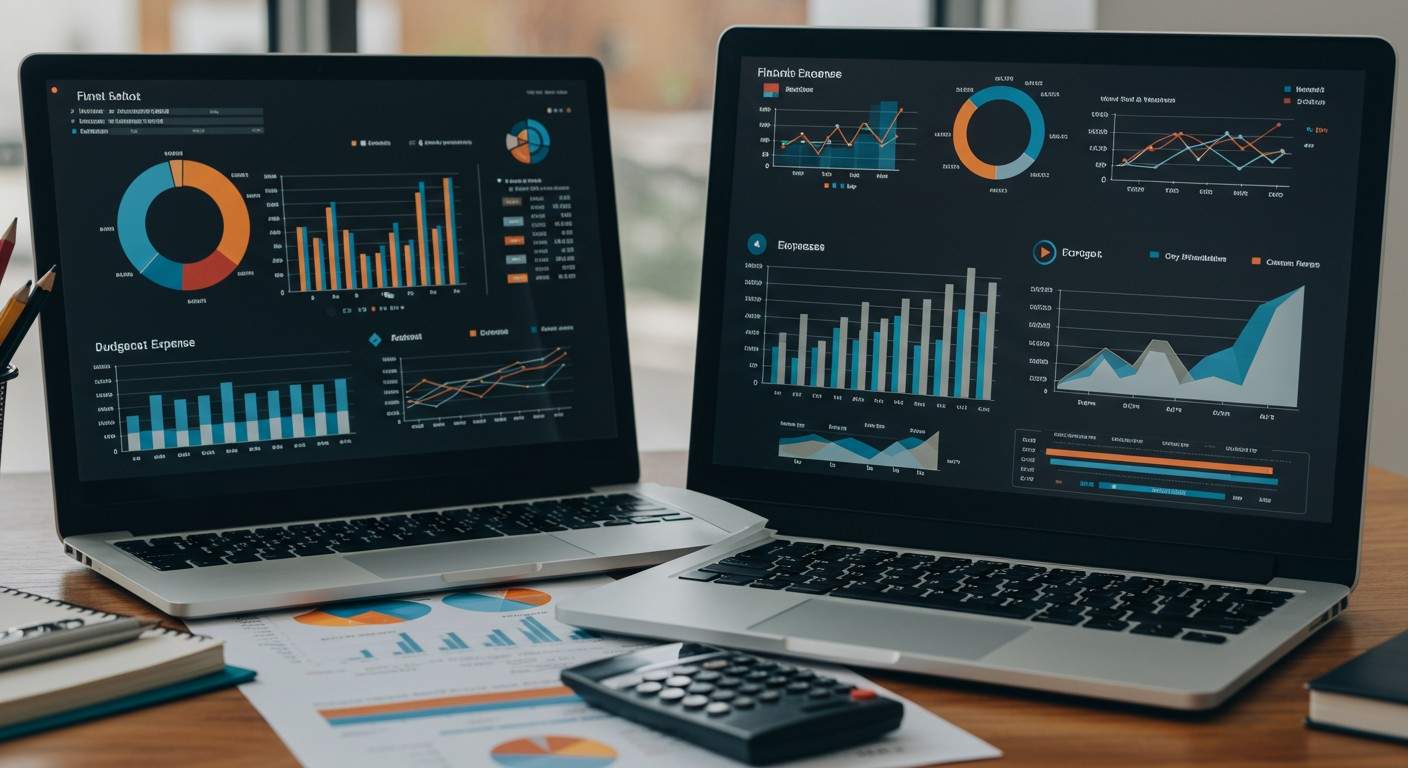Imagine planning a road trip. You set a budget for gas, food, and hotels (your plan). Along the way, you track your spending (your actual numbers). But what if you hit unexpected traffic or find cheaper options? That’s where forecasting comes in—helping you adjust your plan based on real-time data.
Understanding the difference between budget, actual, and forecast is crucial for better financial planning. Whether you’re running a business or managing personal finances, these three elements work together to give you control over your money. And with tools like a Forecast vs Budget vs Actual Dashboard, you can simplify this process and make smarter decisions.
What is a Budget?
A budget is a financial plan for a specific period. It outlines how much money you expect to earn (income) and how much you plan to spend (expenses). Think of it as a roadmap for your finances.
For example, a small business might set a monthly budget for marketing expenses. This helps them stay on track and avoid overspending.
Why is a budget important?
- It sets clear goals and benchmarks.
- It helps you allocate resources effectively.
- It acts as a reference point to measure performance.
Tools like Excel templates or dashboards can make budgeting easier. For instance, you can use a Wise Income dashboard to create and track your budget in real-time.
What is a Forecast?
While a budget is a plan, a forecast is a projection of future financial outcomes. It’s based on historical data, trends, and current conditions.
For example, if your business has been growing steadily, you might forecast higher sales for the next quarter. This helps you prepare for what’s coming, whether it’s good or bad.
Why is forecasting important?
- It helps you adapt to changes.
- It provides a more flexible view than a budget.
- It allows you to make proactive decisions.
The key difference between a budget and a forecast is that a budget is fixed, while a forecast is adjustable.
What are Actuals?
Actuals are the real numbers—what you actually earned or spent during a period. They’re the results of your actions and decisions.
For example, if your budget projected 10,000in∗∗sales∗∗butyour∗∗actual∗∗saleswere 10,000in∗∗sales∗∗butyour∗∗actual∗∗saleswere 12,000, you have a positive variance. This means you performed better than expected.
Why are actuals important?
- They show how well you stuck to your budget.
- They help you identify variances (differences between budget and actuals).
- They provide insights for future planning.
Using a Forecast vs Budget vs Actual Dashboard, you can easily compare your actual numbers to your budget and forecast. This helps you spot trends and make adjustments as needed.
Budget vs Forecast vs Actual: Key Differences
Let’s compare these three concepts side by side:
| Aspect | Budget | Forecast | Actual |
| Definition | A financial plan | A projection of future outcomes | Real financial results |
| Purpose | To set goals and benchmarks | To adapt to changes | To measure performance |
| Flexibility | Fixed | Adjustable | N/A |
| Example | Monthly marketing budget | Adjusted sales projection | Actual marketing spend |
This table highlights the difference between these three elements and how they work together.
Why is a Forecast vs Budget vs Actual Dashboard Important?
A Forecast vs Budget vs Actual Dashboard is a powerful tool that brings all your financial data together in one place. It helps you visualize your budget, forecast, and actuals in an easy-to-understand format.
Benefits of using a dashboard:
- It simplifies variance analysis.
- It helps you spot trends and patterns.
- It makes data-driven decision-making easier.
For example, you can use a WiseIncome dashboard to create a chart that compares your budget, forecast, and actuals. This gives you a clear picture of your financial performance.
Dashboards are powerful tools for tracking performance across different areas of a business. If you’re looking to improve customer support efficiency, check out our Customer Service Dashboard for real-time insights and better team collaboration.
How to Analyze Budget vs Actual vs Forecast
Analyzing your budget, actuals, and forecast is easier than you might think. Here’s a step-by-step guide:
- Compare actuals to budget: Identify variances (differences).
- Use forecasts to adjust plans: If your actual sales are lower than budgeted, use your forecast to adjust spending.
- Update your dashboard regularly: Keep your data accurate and up-to-date.
For example, if your actual expenses are higher than budgeted, you might use your forecast to predict future cash flow and adjust your spending accordingly.
Staying organized is key to keeping track of budgets and forecasts. Check out our 7-Day Printable Weekly Schedule Template to plan your financial tracking efficiently.
Real-Life Example
Let’s look at a real-life example:
A small business owner sets a monthly budget of 5,000 foradvertising.Mid−month,theynoticetheir∗∗actual∗∗spendingis 5,000foradvertising.Mid−month,theynoticetheir∗∗actual∗∗spendingis6,000 due to higher ad costs. Using their forecast, they predict that sales will still meet targets. So, they adjust other expenses to compensate.
In this scenario, a Forecast vs Budget vs Actual Dashboard would help the business owner visualize the variance and make informed decisions.
Tools and Templates
To make budgeting, forecasting, and tracking actuals easier, here are some tools and templates you can use:
- Excel templates: Create a simple budget vs actual spreadsheet.
- WiseIncome dashboard: Visualize your financial data in one place.
- Power BI: Create advanced charts and dashboards.
You can also download a reliable Excel template to get started.
In addition to financial tracking, maintaining operational safety is crucial. Use our Safety Audit Checklist Template to ensure compliance and risk management in your business.
Conclusion
Understanding the difference between budget, actual, and forecast is key to better financial planning. A budget is your plan, a forecast is your prediction, and actuals are your real results.
By using a Forecast vs Budget vs Actual Dashboard, you can simplify this process and make smarter decisions. Whether you’re managing a business or personal finances, these tools and concepts will give you the power to stay on track.
Ready to take control of your finances? Start using a Forecast vs Budget vs Actual Dashboard today!
FAQs
How often should I update my forecast?
It depends on your business, but monthly or quarterly updates are common.
What tools can I use to track budget vs actuals?
Tools like Excel templates, WiseIncome dashboards, and Power BI are great options.
What is the meaning of "actuals" in financial terms?
Actuals refer to the real numbers—what you actually earned or spent during a specific period. They are used to compare against your budget and forecast to measure performance.
Can I use an Excel template for forecasting?
Yes, Excel templates are a great starting point for creating projections. You can input historical data and use formulas to generate forecasts. For more advanced features, consider using a dashboard like WiseIncome


